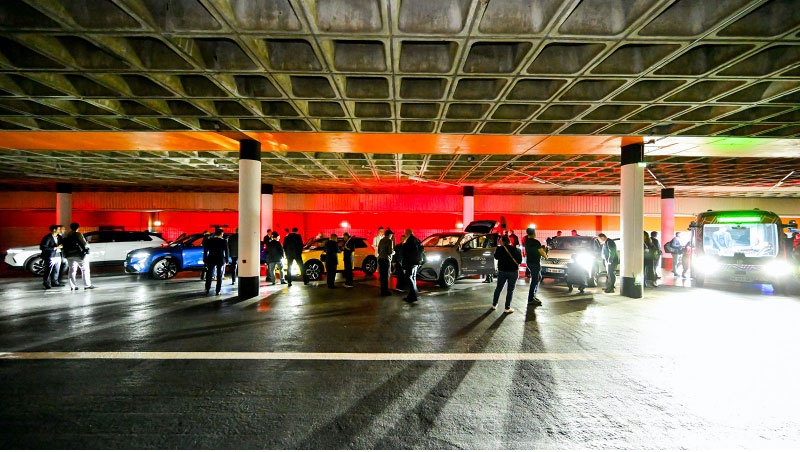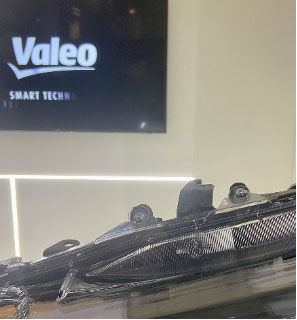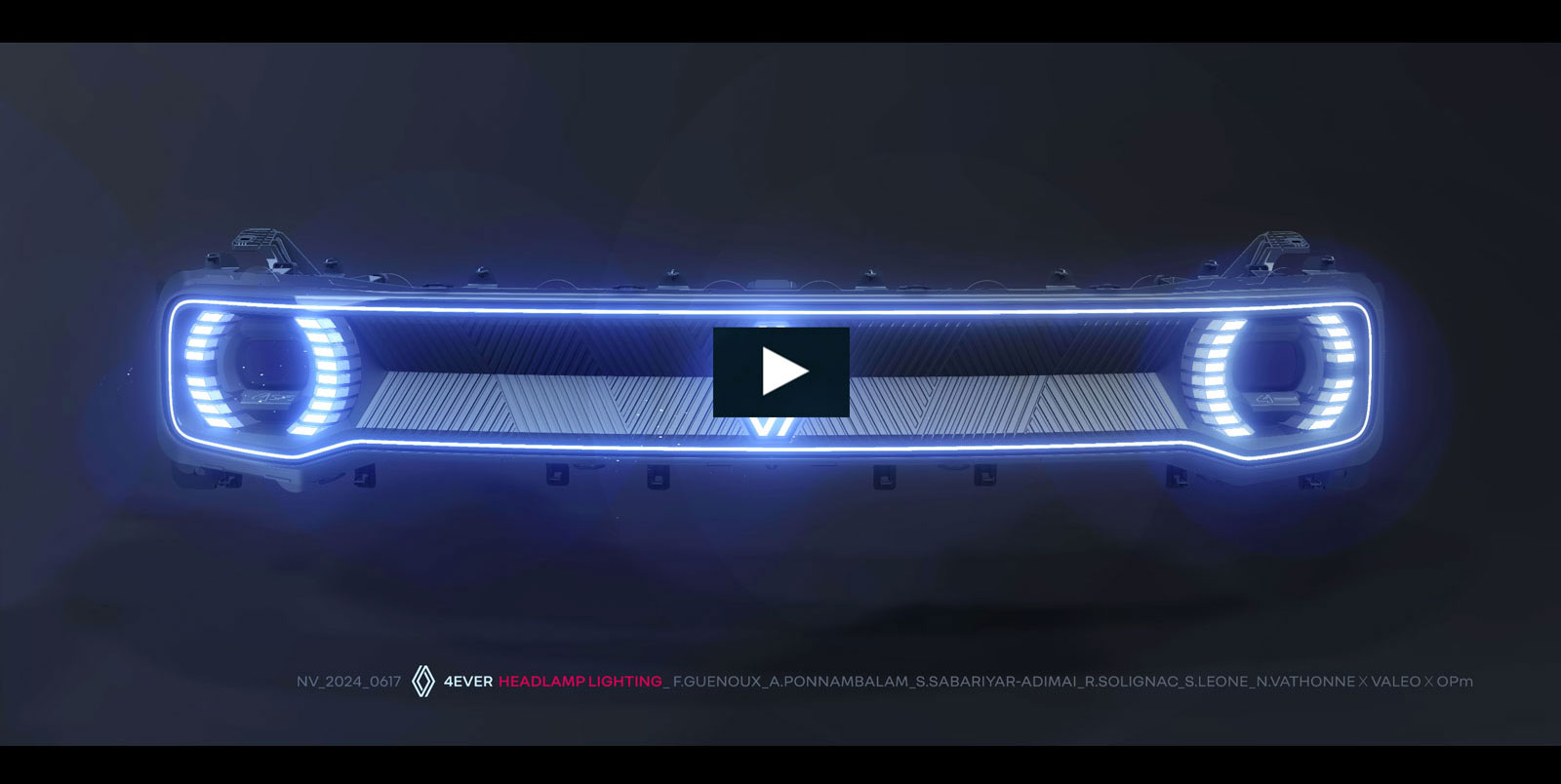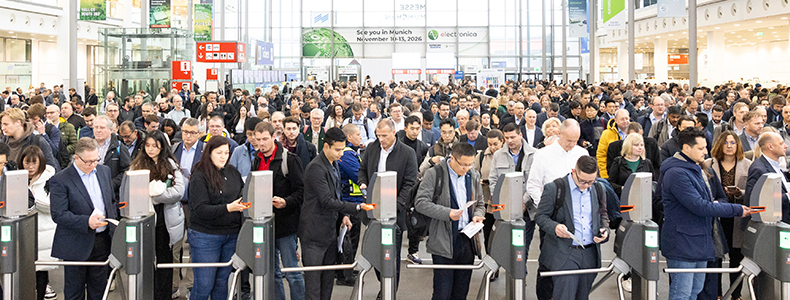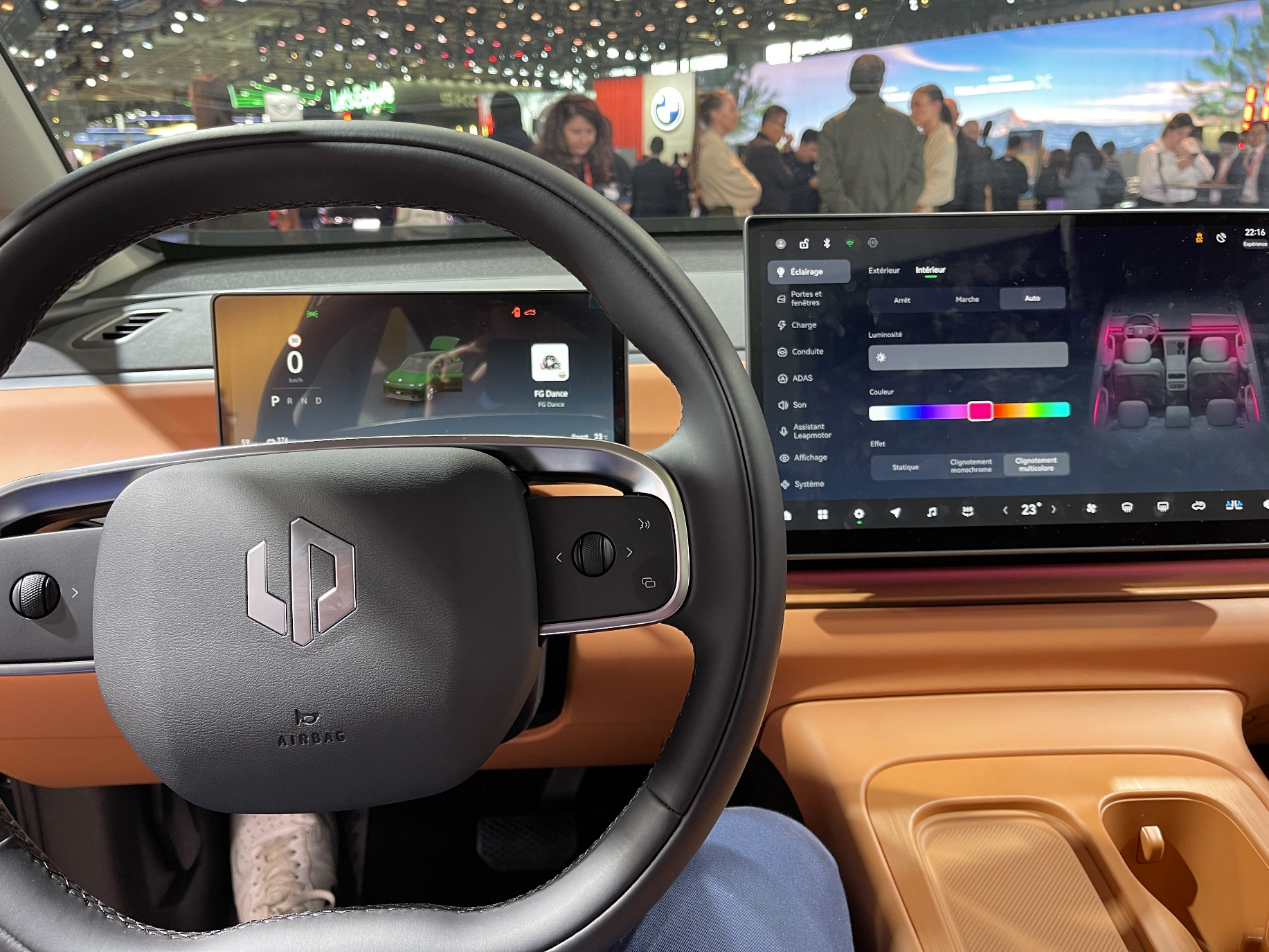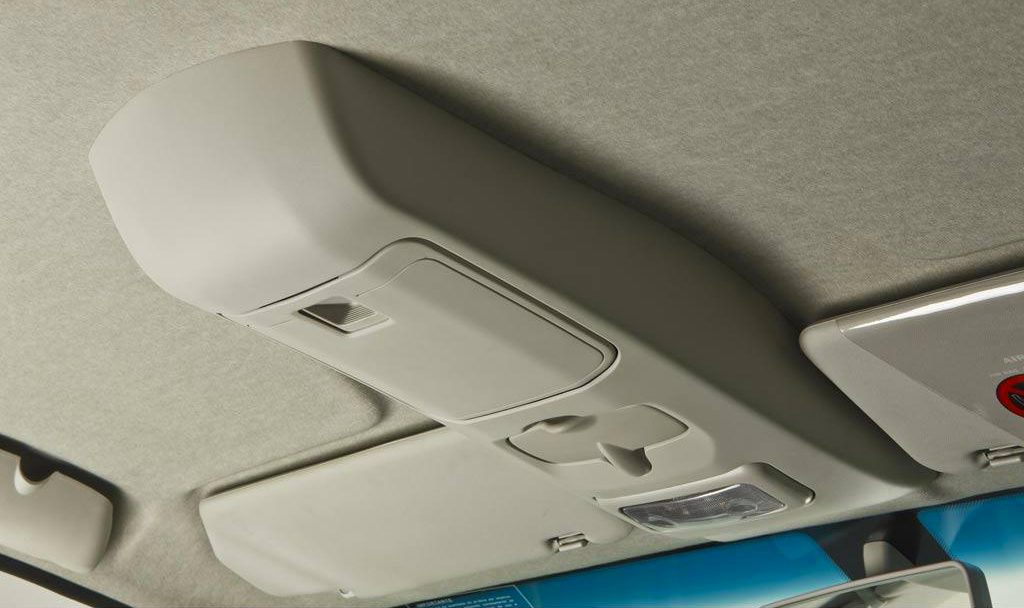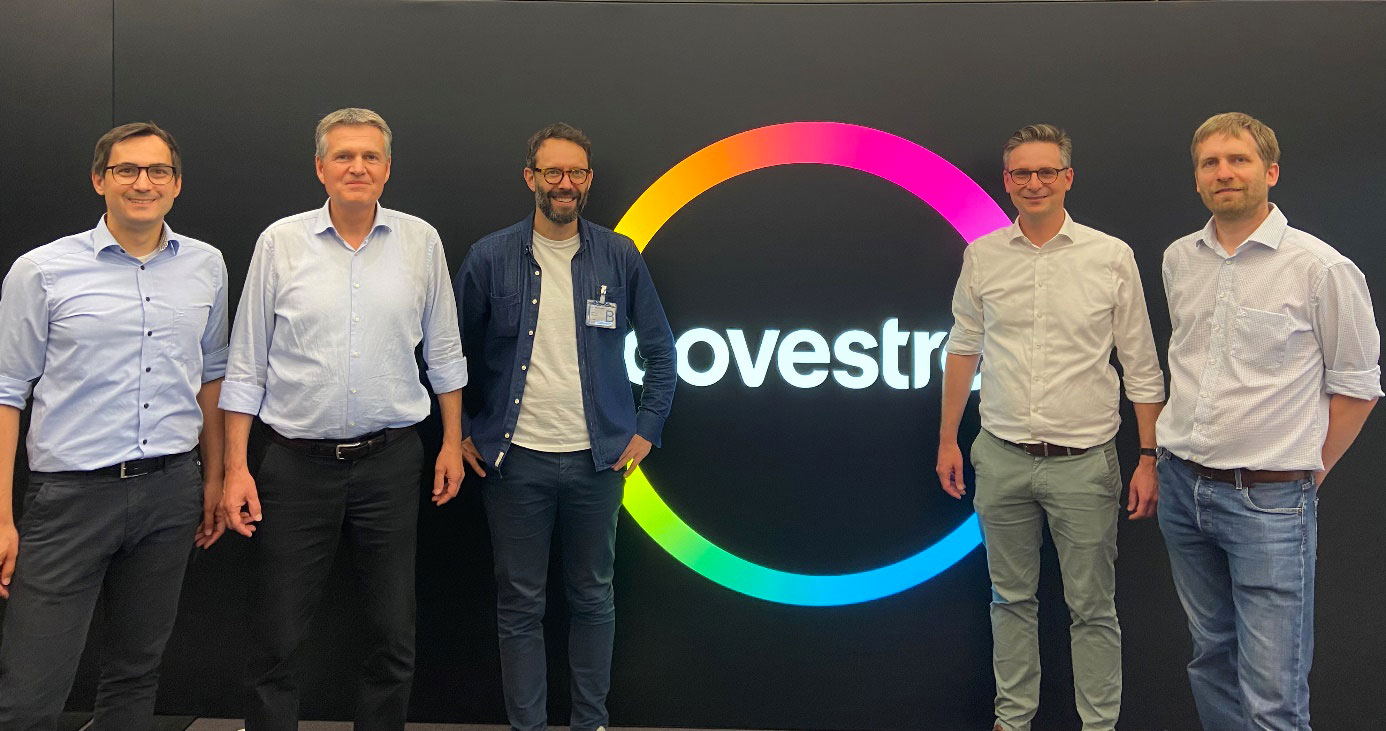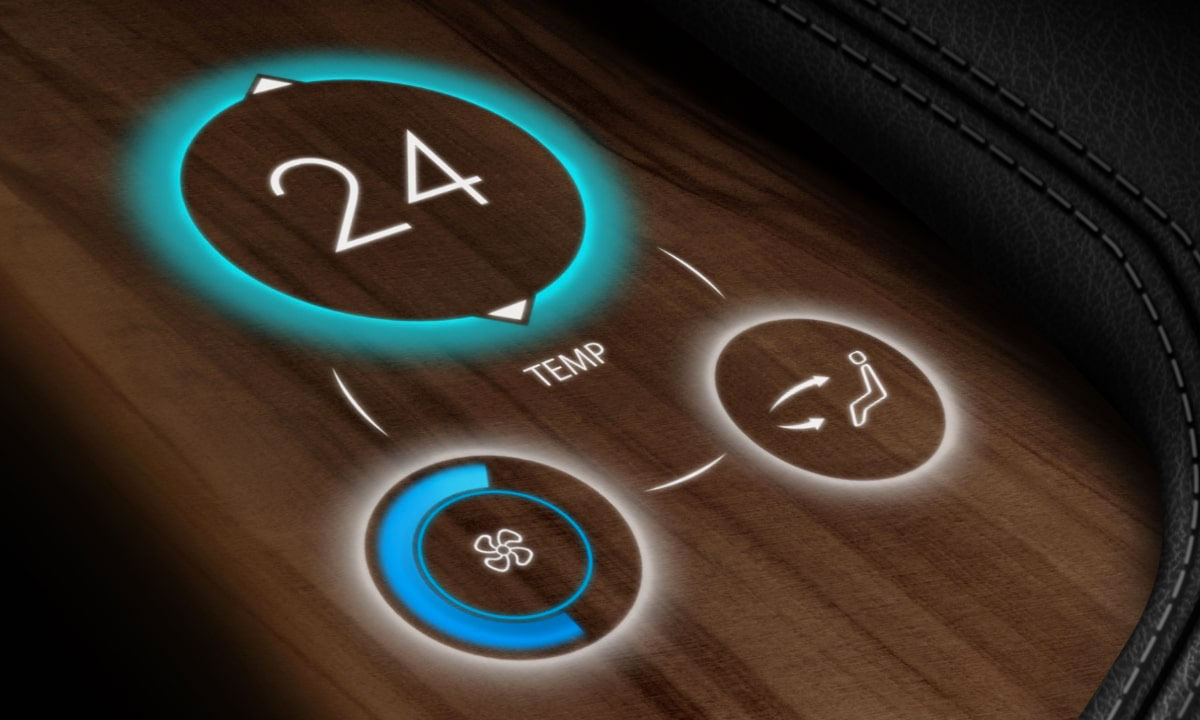More than 500 persons gathered in Paris La Villette on 16-17 October for SIA VISION, the biennial symposium organized by SIA (Société des Ingénieurs Automobiles, the French SAE), including 41 exhibitors and more than 120 different companies, to talk about lighting and ADAS.
Gilles Vidal, head of Renault design, 10 years after Laurens van den Acker in 2014, presented his design vision and the importance of lighting:
- What is a good design?
- Less but better as was saying Dieter Rams
- Good design = Progress by Aesthetic, Function, Innovation, and Emotion
- “Just right” is not the same for every brand
- With that extra thing distinguishing it, for instance Lit logo, grille, charge indicator,..

Makers like Renault, BMW, and Stellantis presented their latest products. Illuminated grilles from BMW and Renault are below 18 Watts, and BMW announced a luminance of 2,000 cd/m2.

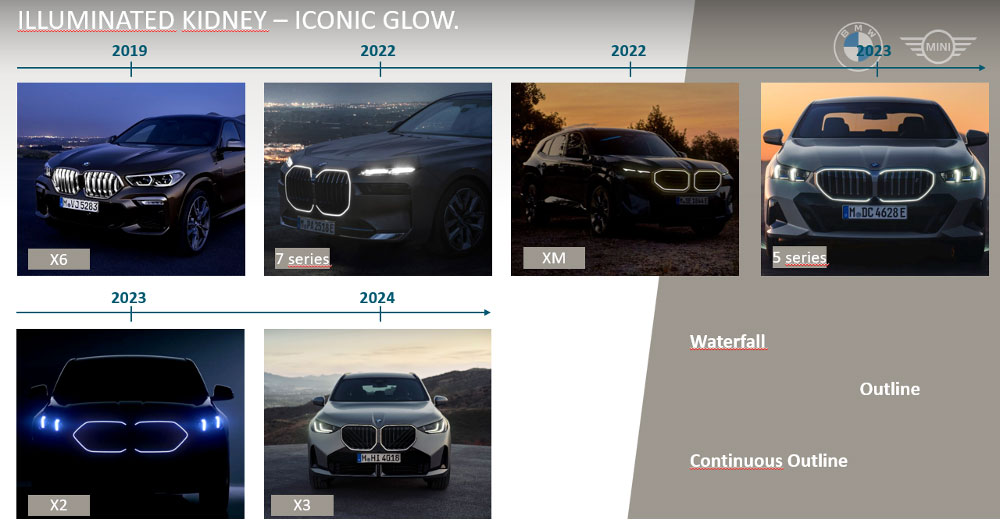
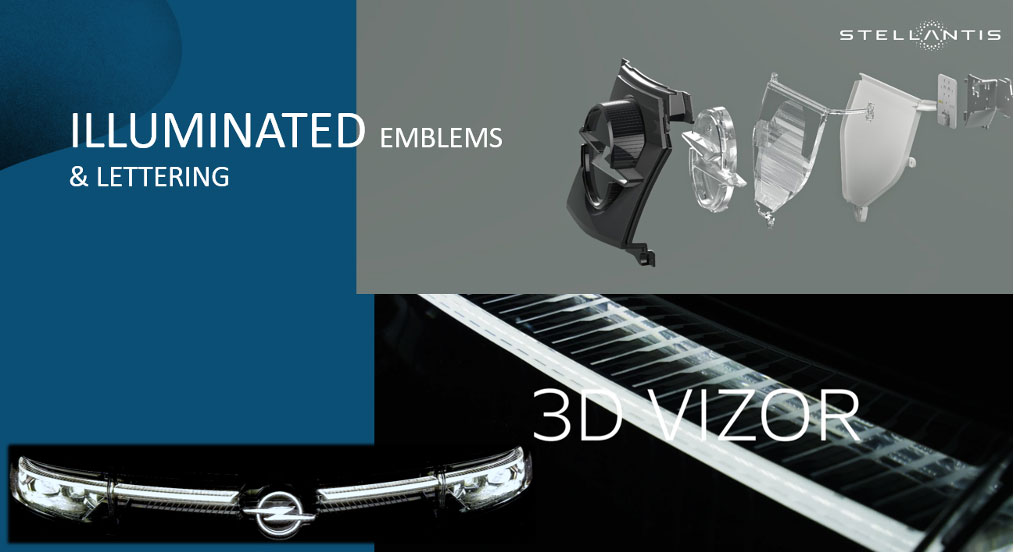
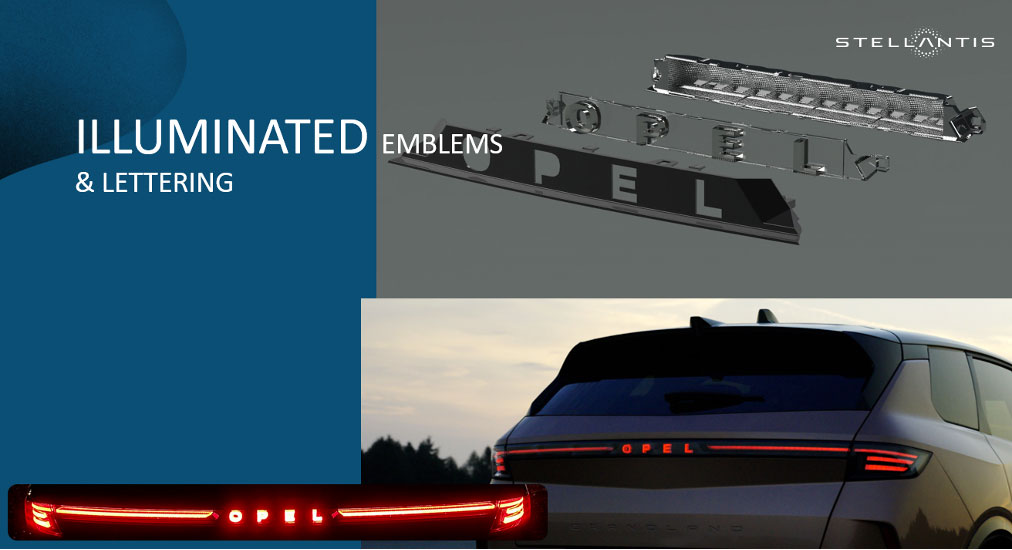
The lecture topics were divided into five groups:
Design elements
Flat surfaces, lit logos and bumpers, invisible light with laser etching (10-20 per cent efficiency for polycarbonate, versus 5-10 per cent for polypropylene in Flex-N-Gate’s presentation), miniLEDs, and suchlike.

Koito explained their new methodology to do faster optical simulation with automatic optimization using advanced algorithms, freeform deformation, and ray tracing. One example: a 15-per-cent increase in low beam intensity at 75R, from 42 to 50 kcd, on account of the optimized reflector.
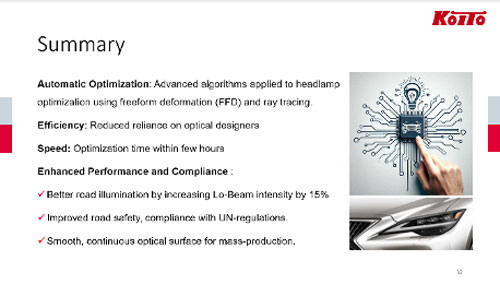
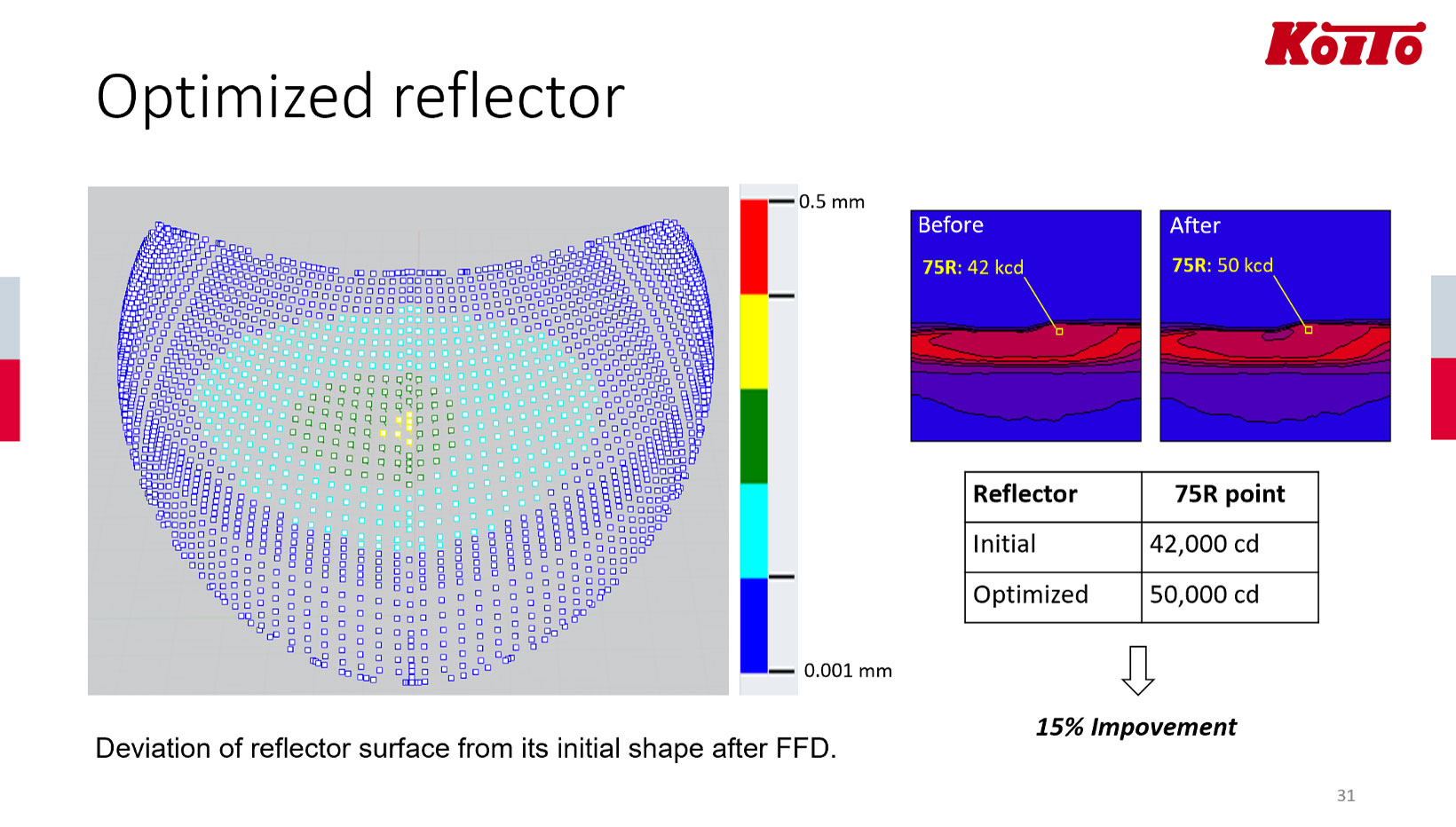
Communication with light
Charging-status lamps on the Renault R5; AD-S (Automatic Driving mode) with turquoise light on Mercedes models, signalling road projections.
For these new functions, new light source technology is coming: low-power LEDs <0.1W, miniLED modules, large optical surfaces, and more.
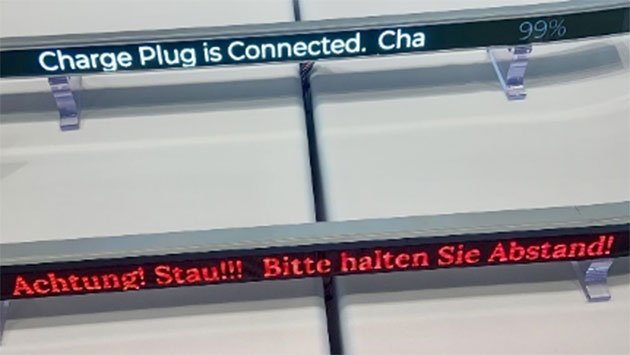
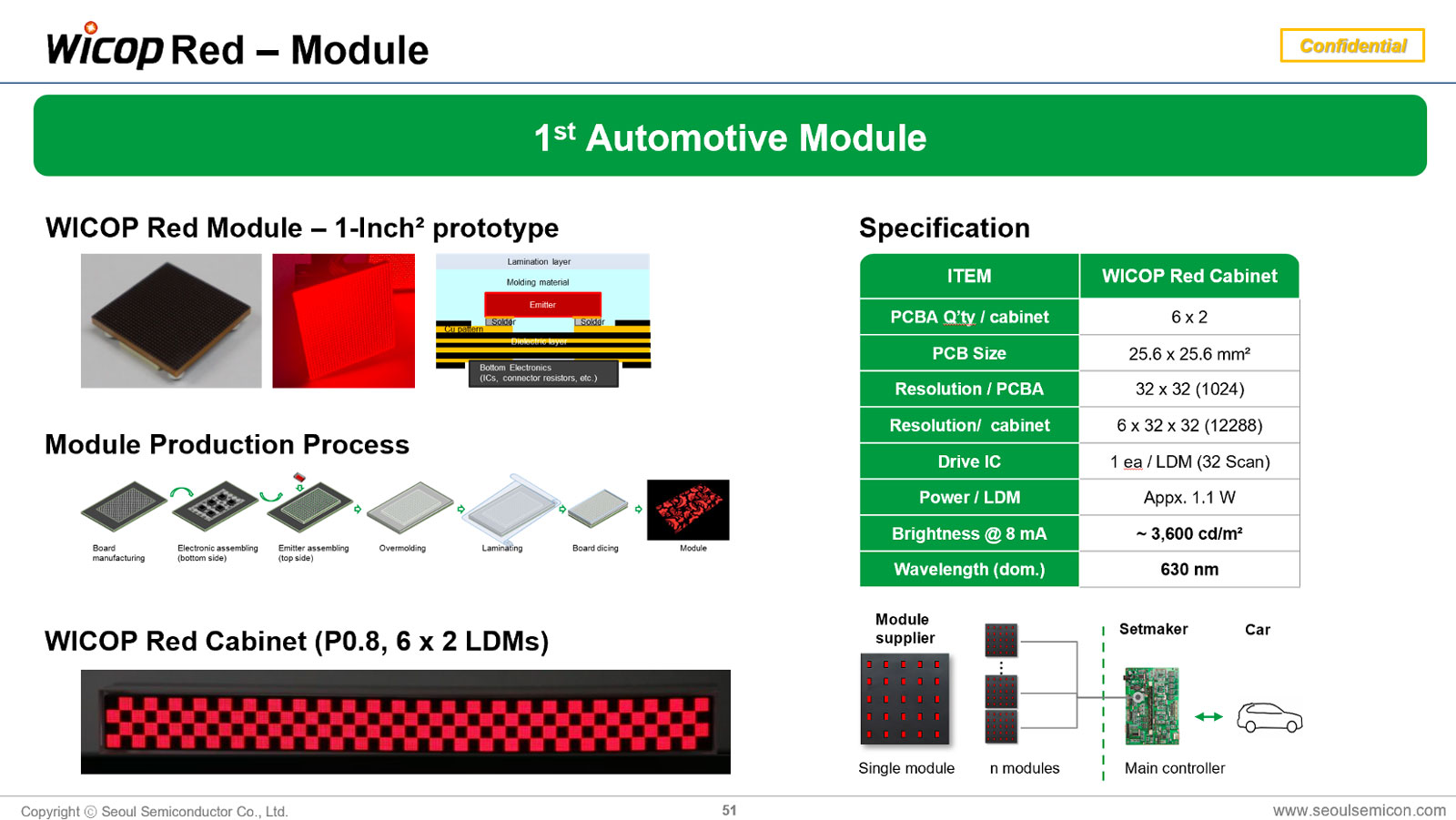
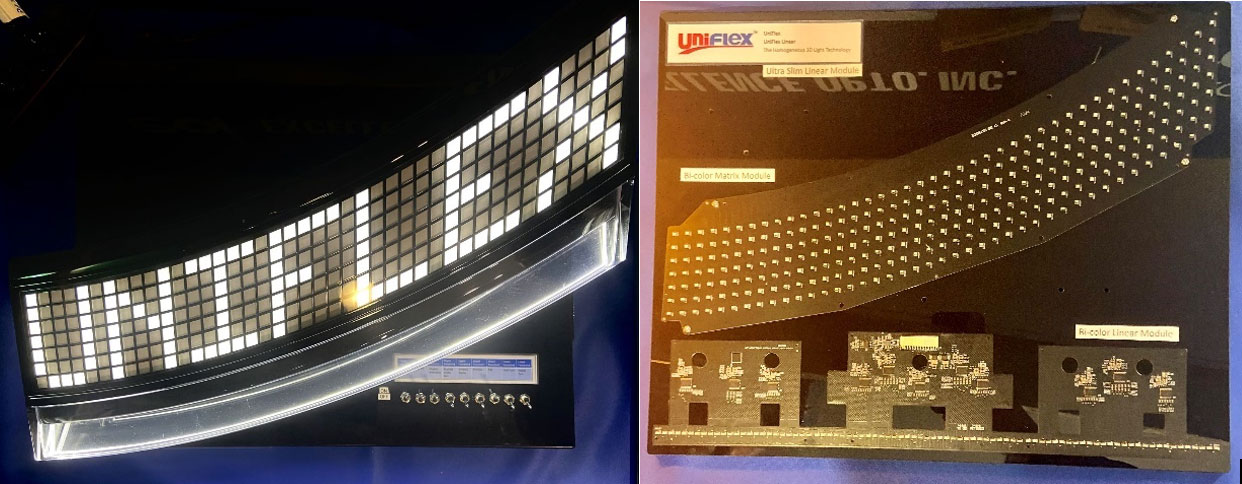

Dynamic signalling projection, visible by day, could be done with DLP or MEMS technology, LED or laser. Specifications converge around 3,000 lux on the ground (per Marelli) to be visible by day 70 per cent of the time (per dissertation of C. Bremer, 2021: Technologische und Physiologische Bewertung Dynamischer Projektions im Automobil).

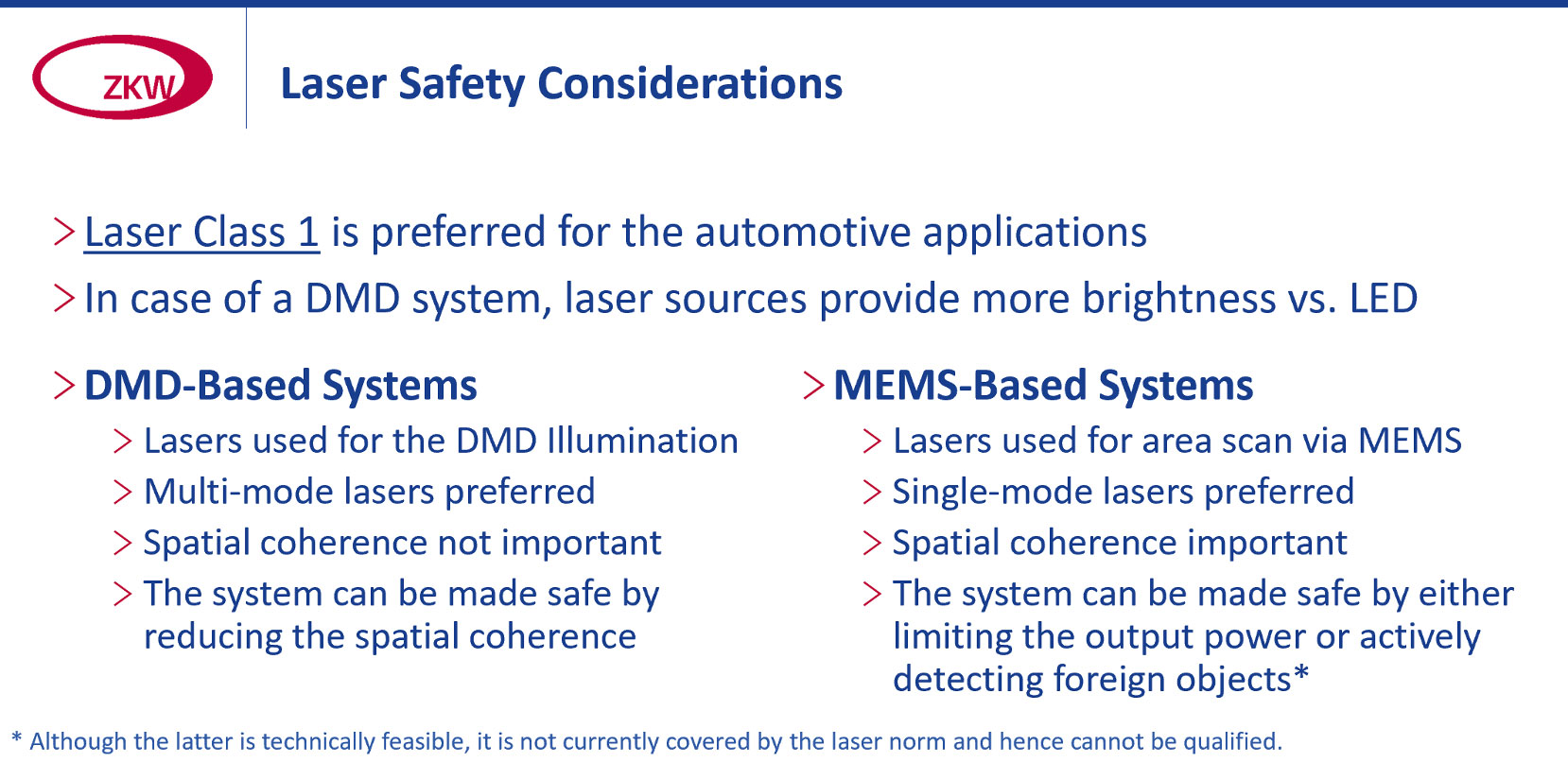
A good pitch specification for displays seems to be 0.7mm according to Opmobility’s study—similar to Seoul SC’s miniLED module—offering a good appearance from 0.5 to 2 m.
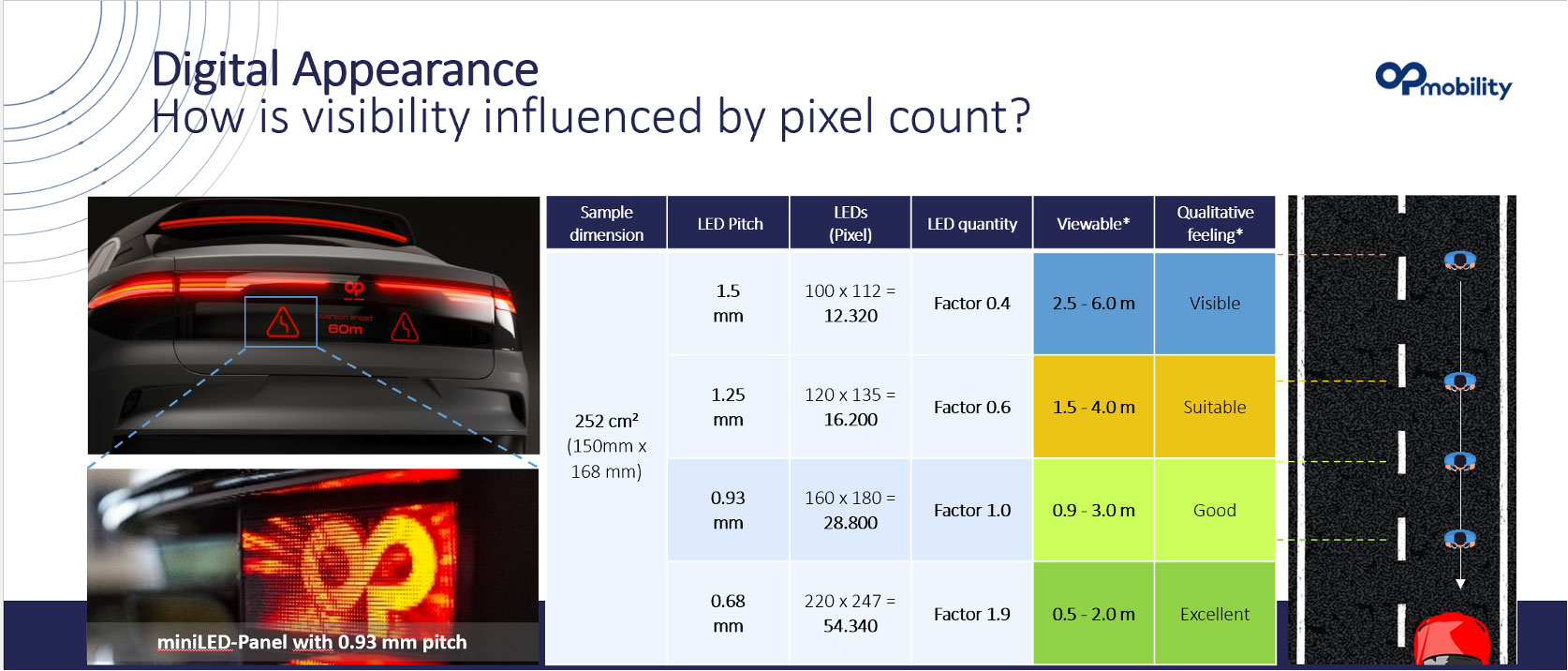
In this case, bandwidth may require ethernet to display the needed information (25 or 120 kilopixels)
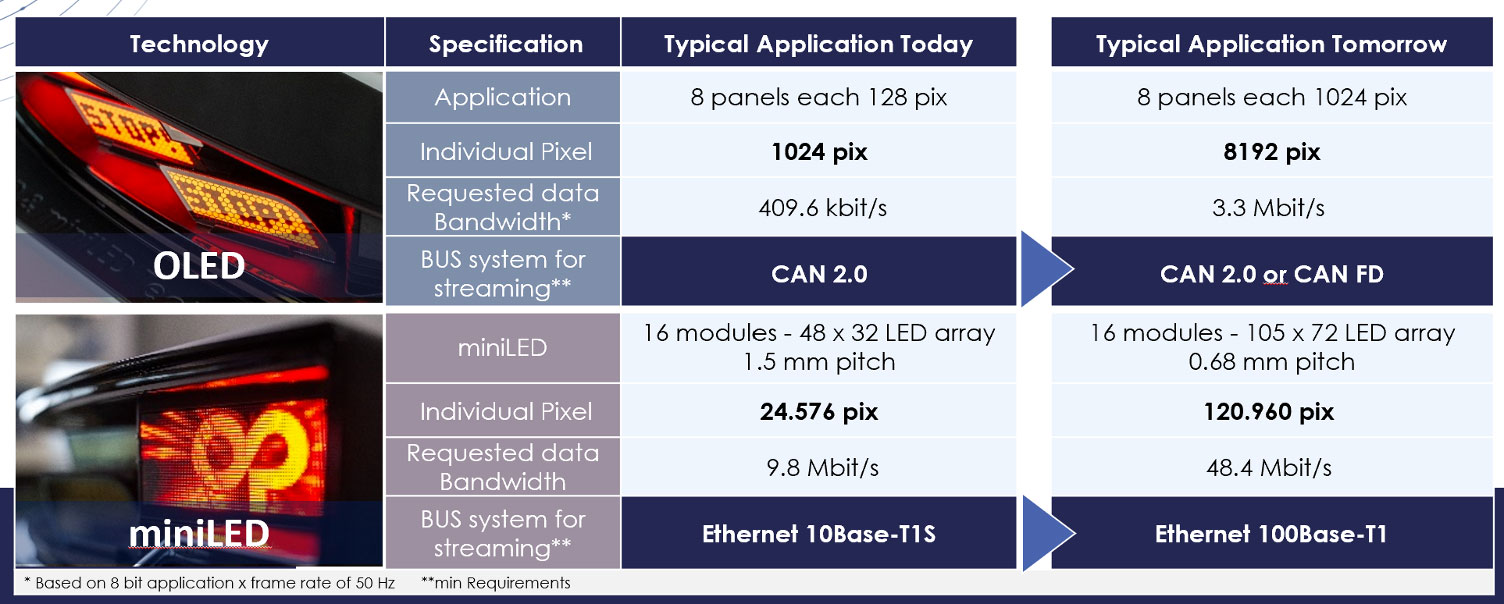
Safety
Universities are studying how to best use the HD technology available on the market to increase safety with better object detections for human eyes and ADAS sensors.
For example: a striated light pattern for better camera perception:

Or usage of HD capabilities for pedestrian contour to avoid glare—reducing glareback from white objects or in bad weather by using HD mapping:
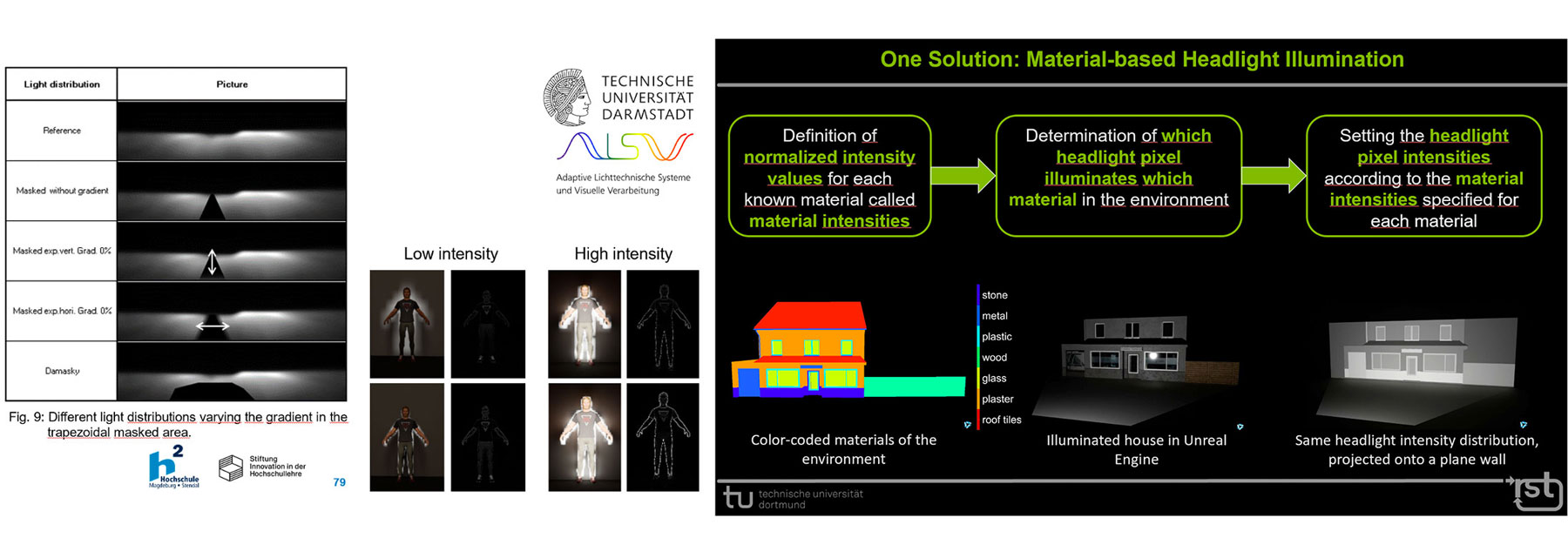
Definition of better signalling functions for 2-wheelers (VRUSC)
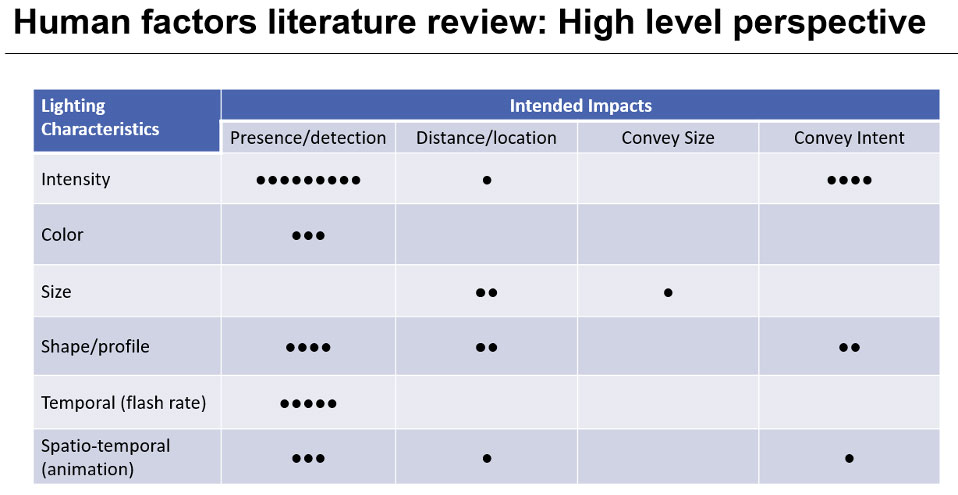
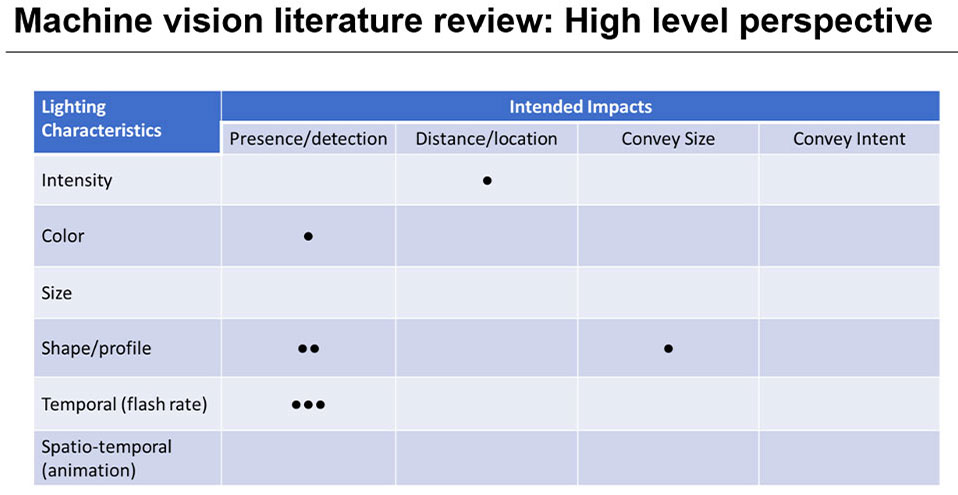
Reduction of glare in ADB scenarios with usage of radar and lidar to anticipate camera detection (Mobis)

Investigation of ADB potential to reduce fatalities: 20 per cent, per Japan’s Institute for Traffic Accident Research and Data Analysis.
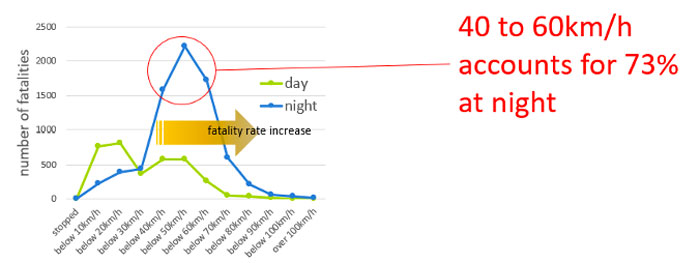
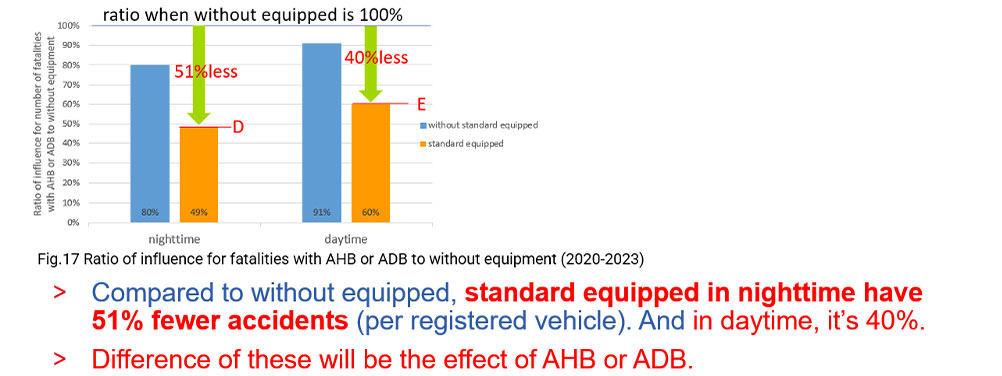
Sustainability
A European regulation is coming in 2030 that will impose new requirements for end-of-life vehicles.
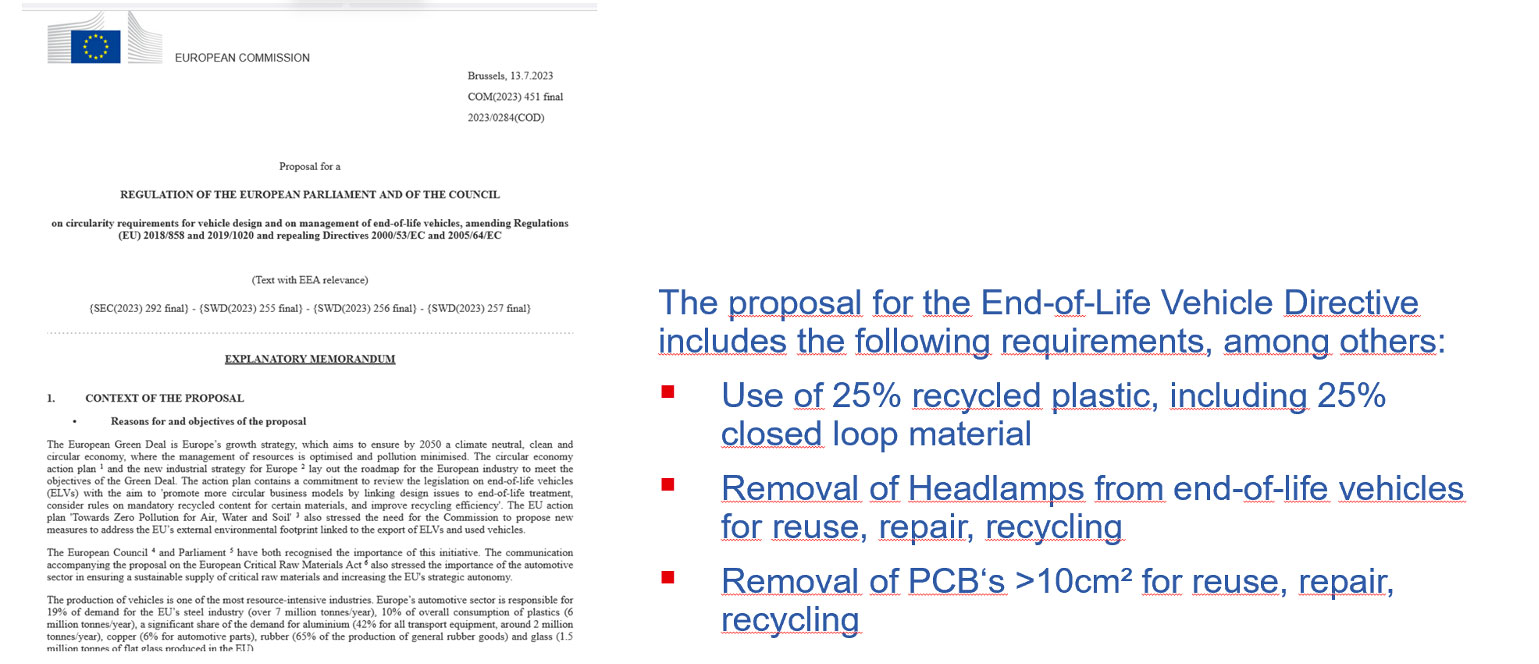
We are clearly not good enough on recycling. Just 9 per cent of the economy was circular in 2018, and in 2024 we’re worse, at 7.2 per cent.
According to Hella, current plastic lamps are not readily recyclable. We recover less than half of lamp plastic, mostly due to contamination, specifically due to lens fixation concepts that need complex dismounting tools (see Valeo’s explanation)

Reparability is a topic for sustainability, and also for customers due to cost. Lamps are the 6th-most-commonly replaced component on a car (after windshield, bumper, doors and side panels).
Some solutions exist, as shown in Renault’s R4 presentation and in the Valeo booth with their Toyota headlamp.
A second part of sustainability is reducing power consumption, and proposals are now coming from light source manufacturers to improve optical efficiency of slim low beams

ADAS sensors integration
Several lectures presented the integration of sensors in headlamps or rearlamps. Radars are the priory for that thanks to their relative compactness and their transmission properties.
One direction is the integration of radar behind an illuminated logo becoming a radome, with different possibilities to optimize both the homogeneity of light and the thickness as presented by Forvia.
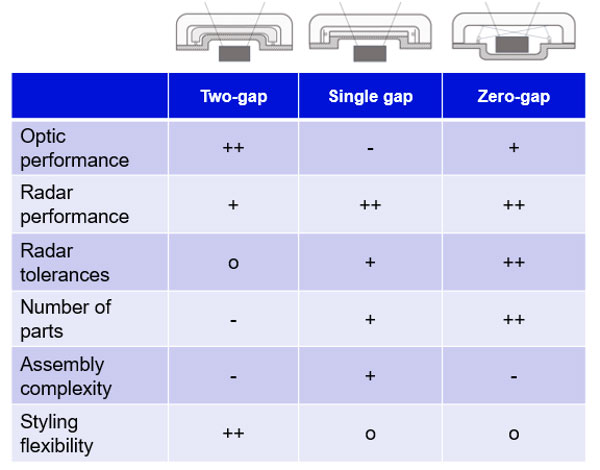
Magna presented also the integration of an automotive FMCW-MIMO 77-81 GHz radar sensor into a rear lamp. This solution can bring various advantages regarding performance, protection, and vehicle packaging.
For that, the thickness of materials of the lamp has to be optimized to reduce reflection and to improve performance, and to manage the heat distribution avoiding heatsink.
Forvia presented also a study for the integration of the different types of sensors including cameras, Lidar and radar in headlamps and rearlamps lamps, with the potential benefits of overview at crossings and turns, adjustment during the assembly of the headlamps and installation as a complete unit, with a potential better sensor fusion, better detection of the contamination, and reduced cost and weight. But there are still difficulties, particularly for adverse weather conditions.
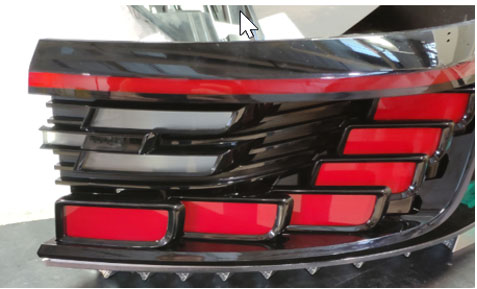
Between the event’s two days, nighttime ride-and-drive demonstrations that have long been a hallmark of the VISION congress allowed attendees to experience, first-hand, the latest lighting and ADAS innovations.
